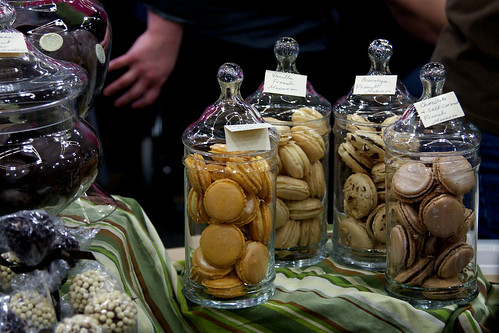New Zealand is in the process of overhauling 60-year old legislation. The new Patents Bill is intended to create a balanced patent system that will protect inventions and encourage innovation.
One of the challenges imposed on the Intellectual Property Office of New Zealand (IPONZ) is to put in place a new computer system that will handle both sets of laws seamlessly. This is an impossible task. However, IPONZ has been providing workarounds to address the inevitable glitches in their system.
Tougher examination
Under the new regime examiners will now be formally permitted to examine for inventive step. The new prior art base for examiners will include matter published or used in New Zealand or elsewhere.
The Bill provides several processes for third party challenge to a patent application or patent. These are opposition before grant, re-examination before grant, assertion before acceptance, revocation before the
Commissioner or Court, and re-examination after grant.
The Bill excludes from patentability any invention where commercial exploitation of the invention is contrary to ordre public (public order) or morality. The Bill further excludes human beings, methods of treatment of human beings, methods of diagnosis practiced on human beings, and plant varieties.
There is also a computer program exclusion that is the subject of a Supplementary Order Paper (SOP). Government SOP 120 introduces a European-style ‘as such’ exclusion. The exclusion is a result of lobbying by the open source community who felt that computer software should be excluded from patent protection like it is in Europe.
The result of all this is that some inventions that are eligible for patent protection under the current law will no longer be patentable under the new law.
Transitional provisions
The validity of patents issued under the current Act will generally be judged under the existing law. Patent applications made under the current Act will generally continue to be dealt with under that Act even after the new Act commences.
PCT applications that enter the New Zealand national phase before the new Act commences will be dealt with under the old Act. Where national phase entry is made after the new Act commences, the application will be dealt with under the new Act.
It is likely that we will see an increase in national phase entry applications prior to the new legislation coming into effect. Some applicants may wish to enter national phase in New Zealand early to avoid the new law.
The new system
In the last couple of years the Intellectual Property Office of New Zealand (IPONZ) has developed a world-leading online registration system.
In a press release last year the Minister responsible described the new system as 'the best in the world. It removes the need for paper filing, cuts down on processing times, reduces compliance burdens and introduces much greater capabilities for Kiwi entrepreneurs'.
Unfortunately the new system is unable to handle cases in which an applicant wishes to enter national phase before publication of the international specification.
New guidelines direct applicants in these circumstances to:
In an earlier post I comment on a proposed regime in which a patent applicant will make a single application to a trans-Tasman portal. The applicant will nominate New Zealand and/or Australia in the application. The trans-Tasman patent application will create a New Zealand application, an Australian application, or a pair of applications that is examined by the same examiner.
The new trans-Tasman portal will probably not have the same glitch and will allow patent applicants to enter national phase early. Until then I guess we are stuck with the workaround.
One of the challenges imposed on the Intellectual Property Office of New Zealand (IPONZ) is to put in place a new computer system that will handle both sets of laws seamlessly. This is an impossible task. However, IPONZ has been providing workarounds to address the inevitable glitches in their system.
Tougher examination
Under the new regime examiners will now be formally permitted to examine for inventive step. The new prior art base for examiners will include matter published or used in New Zealand or elsewhere.
The Bill provides several processes for third party challenge to a patent application or patent. These are opposition before grant, re-examination before grant, assertion before acceptance, revocation before the
Commissioner or Court, and re-examination after grant.
The Bill excludes from patentability any invention where commercial exploitation of the invention is contrary to ordre public (public order) or morality. The Bill further excludes human beings, methods of treatment of human beings, methods of diagnosis practiced on human beings, and plant varieties.
There is also a computer program exclusion that is the subject of a Supplementary Order Paper (SOP). Government SOP 120 introduces a European-style ‘as such’ exclusion. The exclusion is a result of lobbying by the open source community who felt that computer software should be excluded from patent protection like it is in Europe.
The result of all this is that some inventions that are eligible for patent protection under the current law will no longer be patentable under the new law.
Transitional provisions
The validity of patents issued under the current Act will generally be judged under the existing law. Patent applications made under the current Act will generally continue to be dealt with under that Act even after the new Act commences.
PCT applications that enter the New Zealand national phase before the new Act commences will be dealt with under the old Act. Where national phase entry is made after the new Act commences, the application will be dealt with under the new Act.
It is likely that we will see an increase in national phase entry applications prior to the new legislation coming into effect. Some applicants may wish to enter national phase in New Zealand early to avoid the new law.
The new system
In the last couple of years the Intellectual Property Office of New Zealand (IPONZ) has developed a world-leading online registration system.
In a press release last year the Minister responsible described the new system as 'the best in the world. It removes the need for paper filing, cuts down on processing times, reduces compliance burdens and introduces much greater capabilities for Kiwi entrepreneurs'.
Unfortunately the new system is unable to handle cases in which an applicant wishes to enter national phase before publication of the international specification.
New guidelines direct applicants in these circumstances to:
- File the application as a standard application accompanied by a complete specification;
- Provide details of the international filing date and international application number of the application;
- Provide copies of any Notifications or filing receipts issued by WIPO in respect of the international application; and
- Call IPONZ contact centre and request that the application be converted to a national phase application.
In an earlier post I comment on a proposed regime in which a patent applicant will make a single application to a trans-Tasman portal. The applicant will nominate New Zealand and/or Australia in the application. The trans-Tasman patent application will create a New Zealand application, an Australian application, or a pair of applications that is examined by the same examiner.
The new trans-Tasman portal will probably not have the same glitch and will allow patent applicants to enter national phase early. Until then I guess we are stuck with the workaround.



